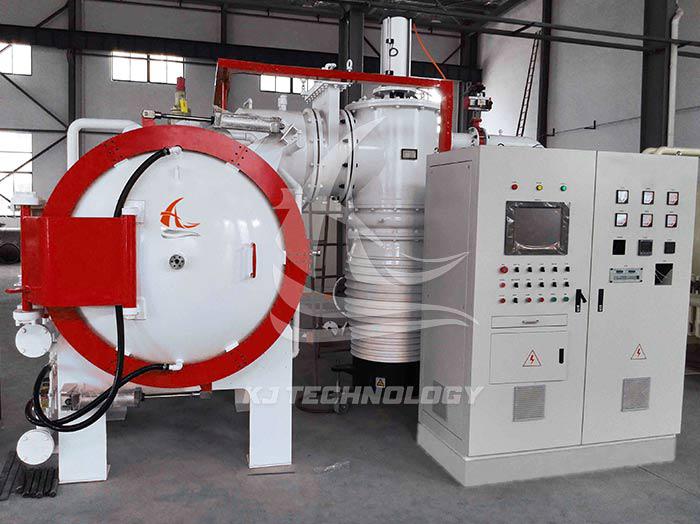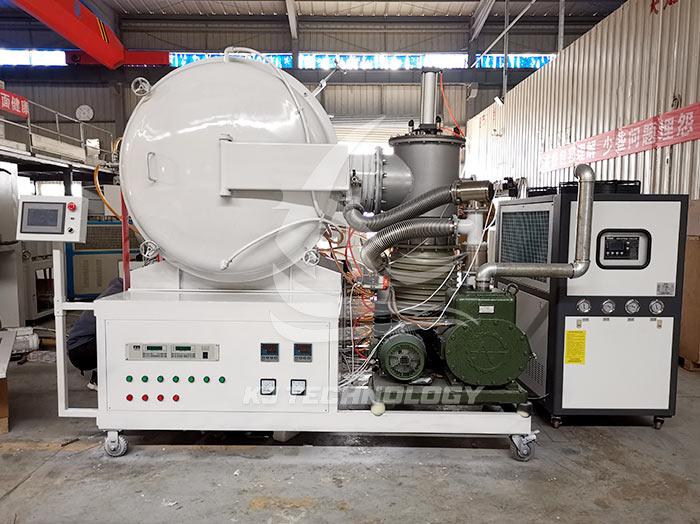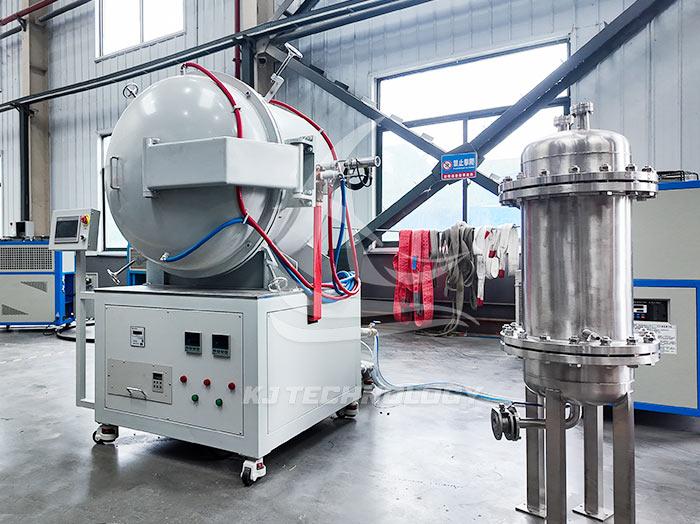Experimental sintering experiment using a small vacuum furnace
 10-21-2025 Author: KJ technology
10-21-2025 Author: KJ technology
The core of the sintering experiment using a small vacuum furnace is to achieve high-temperature sintering of materials through a vacuum environment or protective atmosphere. The key steps include preparation before the experiment, sintering process control, and safety operation standards. The following are specific instructions:
1. Preparation before the experiment
Material Handling
For powdered materials, it is necessary to first grind and mix evenly, add an appropriate amount of water and stir until slightly wet, and then use a compactor to press them into blocks (such as cylindrical shapes with a diameter of 10mm) to reduce spraying.
Block materials can be used directly, but it is necessary to ensure surface cleanliness and avoid impurities affecting sintering quality.
Equipment inspection
Vacuum system: Check the power supply, belt tightness, and oil level of the vacuum pump to ensure normal operation of the vacuum pump; Check whether the vacuum gauge (such as Maxwell vacuum gauge) meets the requirements.
Cooling system: Confirm that the power supply, vacuum furnace heating wire, and furnace cooling water circulation are normal, the water pressure is controlled within the specified value, and the water storage tank is full and free of impurities.
Furnace structure: Check the hygiene of the vacuum furnace body, the insulation performance of the induction coil, the elasticity and dimensional qualification of the sealed vacuum tape; Ensure that the lever handle starts flexibly and that the graphite crucible and furnace loading accessories are complete.
Parameter Settings
Set the sintering temperature (such as 650-1300 ℃ for metal materials), vacuum degree (such as 10-3-10-4Pa), and holding time (such as 30-60 minutes) according to the material characteristics.
Pre store sintering process in the touch screen to avoid multiple editing and input errors.
2. Sintering experiment process
Furnace loading
Place the processed material in a graphite crucible, in the center of the heating element, with the bottom in contact with the thermocouple.
Place the vacuum sealing tape, operate the lever handle to rotate the top cover of the vacuum furnace to closely coincide with the furnace body, lower the top cover and lock the fixing nut.
evacuate
Slowly open the butterfly valve and evacuate the furnace body until the vacuum level reaches the specified value (such as below 50Pa).
Regularly clean the observation and temperature measurement holes on the cover of the vacuum furnace body to ensure accurate observation and temperature measurement.
Heating and insulation
Start the frequency converter, adjust the intermediate frequency power, and operate according to the material sintering procedure to gradually raise the furnace temperature to the set temperature.
Adjust the knob of the power control cabinet to stabilize the temperature, record the constant temperature time, and ensure that the material structure is fully transformed.
cooling
After the constant temperature stage is completed, immediately disconnect the power supply to control the current of the silicon and allow the material to naturally cool down in the vacuum furnace.
The vacuum pump and cooling water remain on to prevent air from entering the furnace and oxidizing the heating element and sintering materials.
When the temperature inside the furnace drops to room temperature, stop the supply of cooling water and disconnect the power supply of the vacuum pump, and open the vacuum furnace to remove the sintered material.
3. Safety operation standards
Electrical safety
Ensure that the electrical circuits are intact, grounded reliably, and regularly check the insulation performance of the equipment.
Gas safety
Under vacuum conditions, workpieces or containers that are prone to volatilization and affect vacuum hygiene should not be placed in the furnace to prevent pipeline blockage and vacuum pump fouling.
If active gases (such as H2 and NH3) are used, explosion-proof devices must be equipped, and the exhaust gas must be treated by catalytic combustion or alkaline absorption.
emergency response
When the vacuum system leaks, immediately turn off the gas source and evacuate personnel.
During a fire, use dry powder fire extinguishers and do not use water to extinguish the fire.
During the sintering process, observe the holes from the side of the furnace at all times. If any abnormal phenomena are found, they should be immediately reported to relevant personnel for handling.








